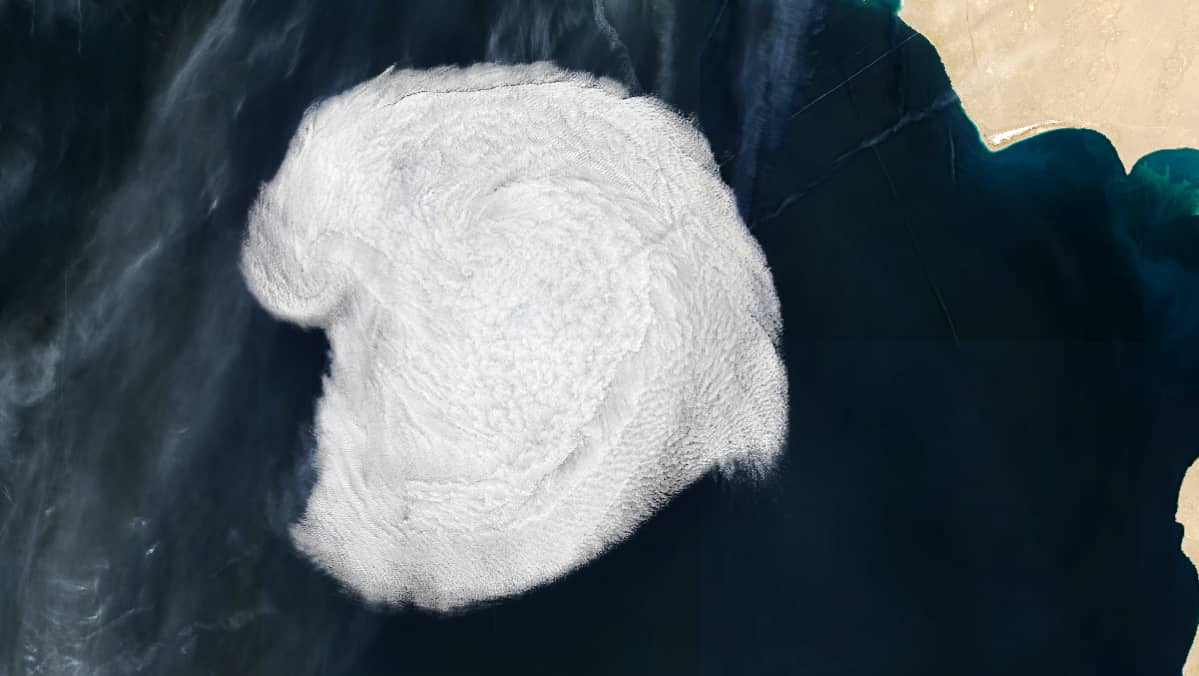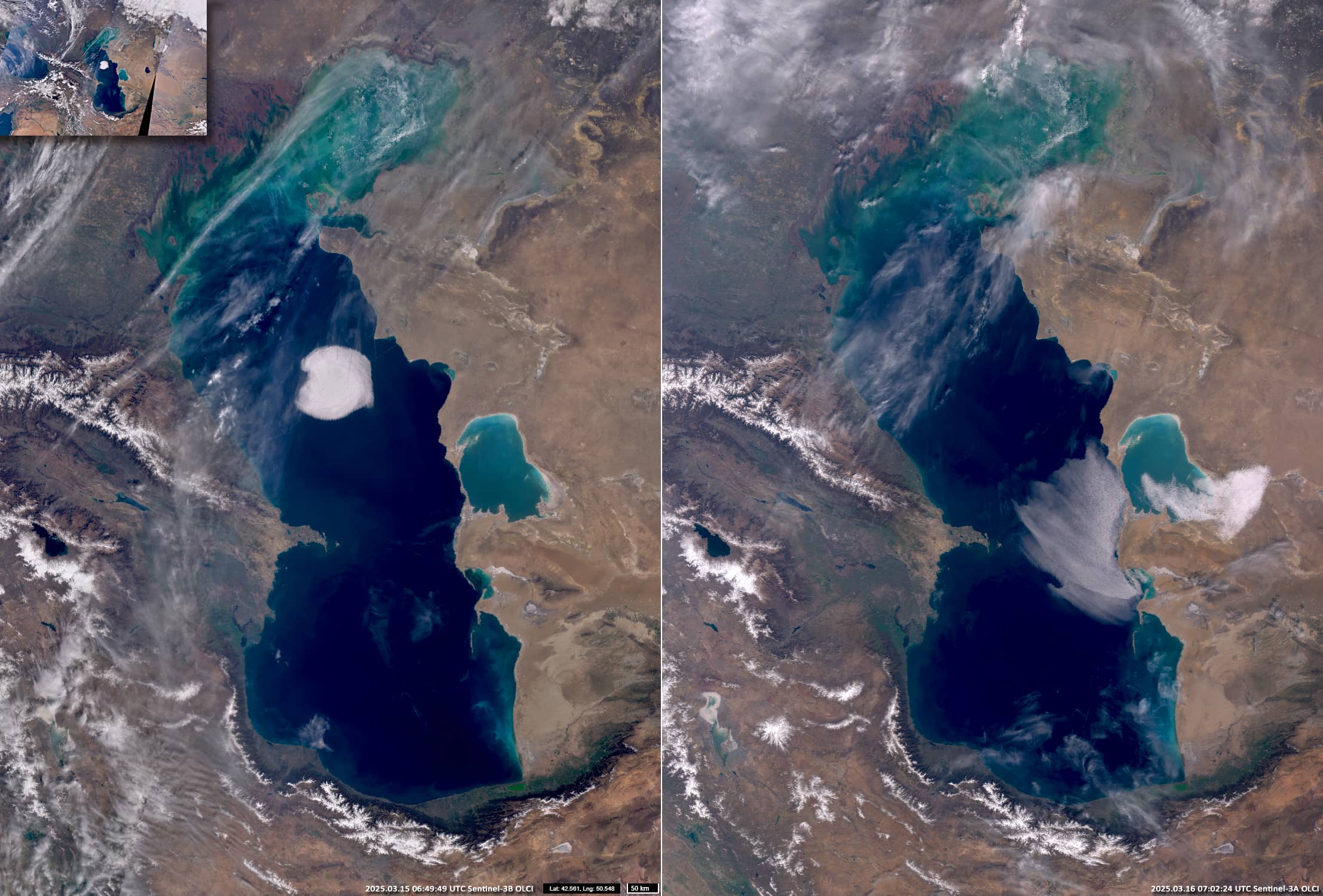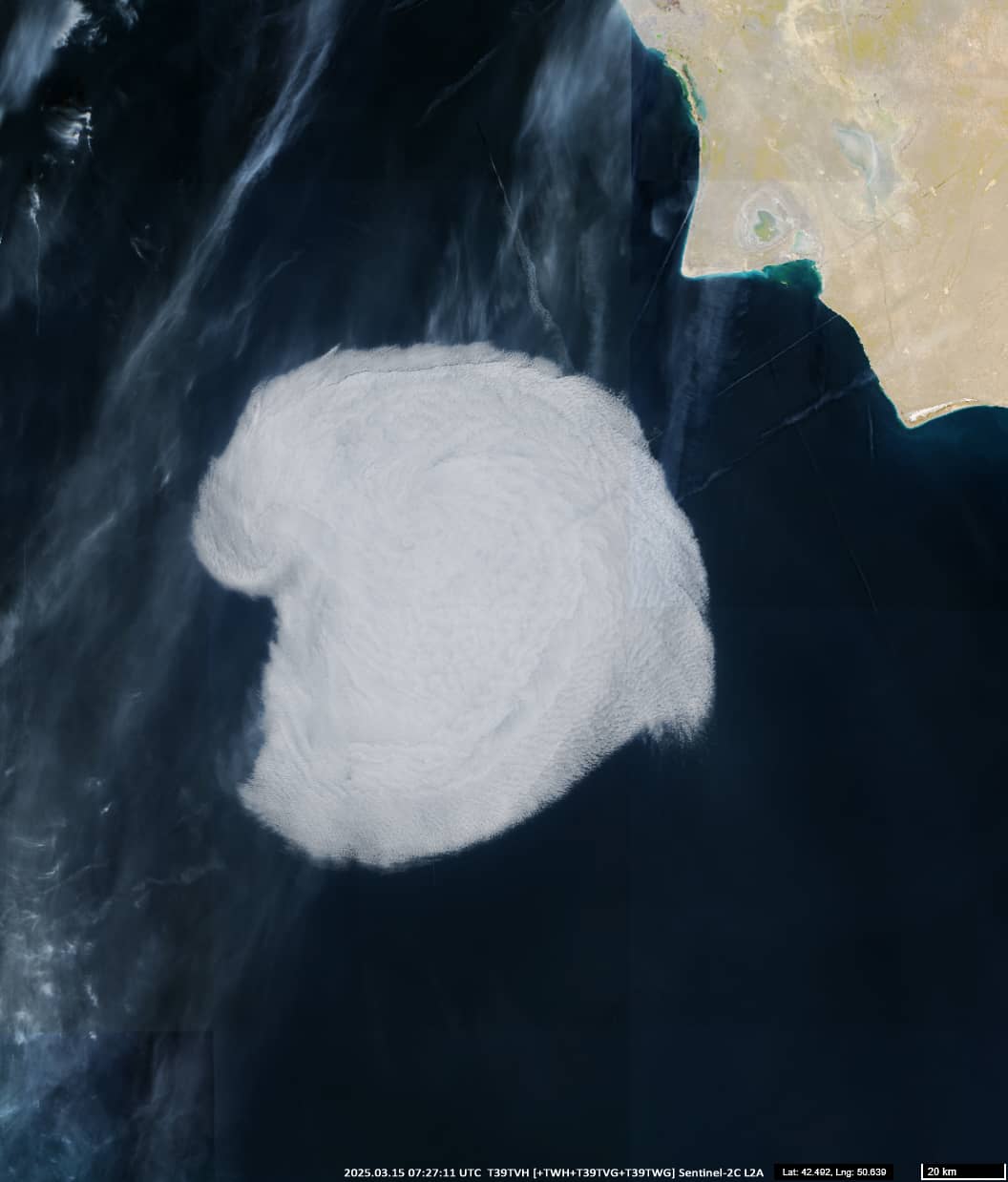
The story of a cloud
Caspian Sea | West Asia/East Europe
Dates of acquisition:
• March 15th, 2025 | 07:27:11 UTC
• March 15th, 2025 | 06:49:49 UTC
• March 16th, 2025 | 07:02:24 UTC
Sensors: Sentinel-2C L2A, Sentinel-3B OLCI, Sentinel-3A OLCI
Coordinates: ca. 42.2°N, 51.2°E
A lone cloud formed over the Caspian Sea in Mid-March 2025.
The cloud may have formed when warm, dry air encountered cooler, moister air over the Caspian, which would also explain its sharp edges.
As it will be the hero of our story, we will call it “Onalňyz Bulut” (“Lonely Cloud” in Turkmen).
Bulut was born on March 14 at 22:00 (UTC) – (the sea surface temperature at this time and in this place was 9-10°C). It grew to a size of ~4740 km² (max. length up to 130, max. width up to 50 km) at 2 a.m. on 15 March, whereupon it turned cyclonic (counterclockwise) and moved across the sea in a southeasterly direction.
At 6:50 am, Onalňyz was spotted by Sentinel-3 over the central part of the Caspian Sea (Figure 1, left), and at 7:30 a.m. by Sentinel-2 (Figure 2). At this time, the cloud already had a circumference of 400 km and an area of 11,250 km². It continued to rotate at a circumferential speed of up to 28 km/h. In the area of the centre 42.18°N, 51.12°E below the middle of Bulut there was no wind (0 km/h), air pressure 1018 hPa, no precipitation. Sea surface temperature 7-8 °C.
The high-resolution Sentinel-2 image (Figure 3) shows the internal structure of the cloud, local winds and eddies within it.
At 11:45 a.m. Onalňyz Bulut reached an area of 17,800km², which is almost comparable to the area of the Kara-Bogaz-Gol Gulf in front of it (18,400 km²). At 6 p.m. on 15 March, in the dark, Bulut approached the limits of this gulf, and on the morning of 16 March it was partially over Turkmen territory and partly still over the sea, while Kara-Bogaz-Gol was almost covered by it. At 4 a.m. the next day its surface area was about 80,000km² (slightly larger than the Netherlands, Belgium and Luxembourg combined). At 6 a.m., the central part of the cloud dissipated due to the rising currents on the Türkmenbaşy Peninsula, warmed by the morning sun, and Onalňyz Bulut split into two parts. This was recorded by Sentinel-3 at 7 a.m. (Figure 1, right). Around 10 a.m., the part over the desert finally dissipated, while the part above the sea decreased significantly.
It then continued to decrease, and at 2-3 p.m. on 16 March, already in darkness, Onalňyz Bulut finally disappeared. He lived for 40 hours.
This phenomenon over the Caspian is not an isolated case. On May 28, 2022, a similar picture was observed, only the cloud was drifting in a northwesterly direction.






